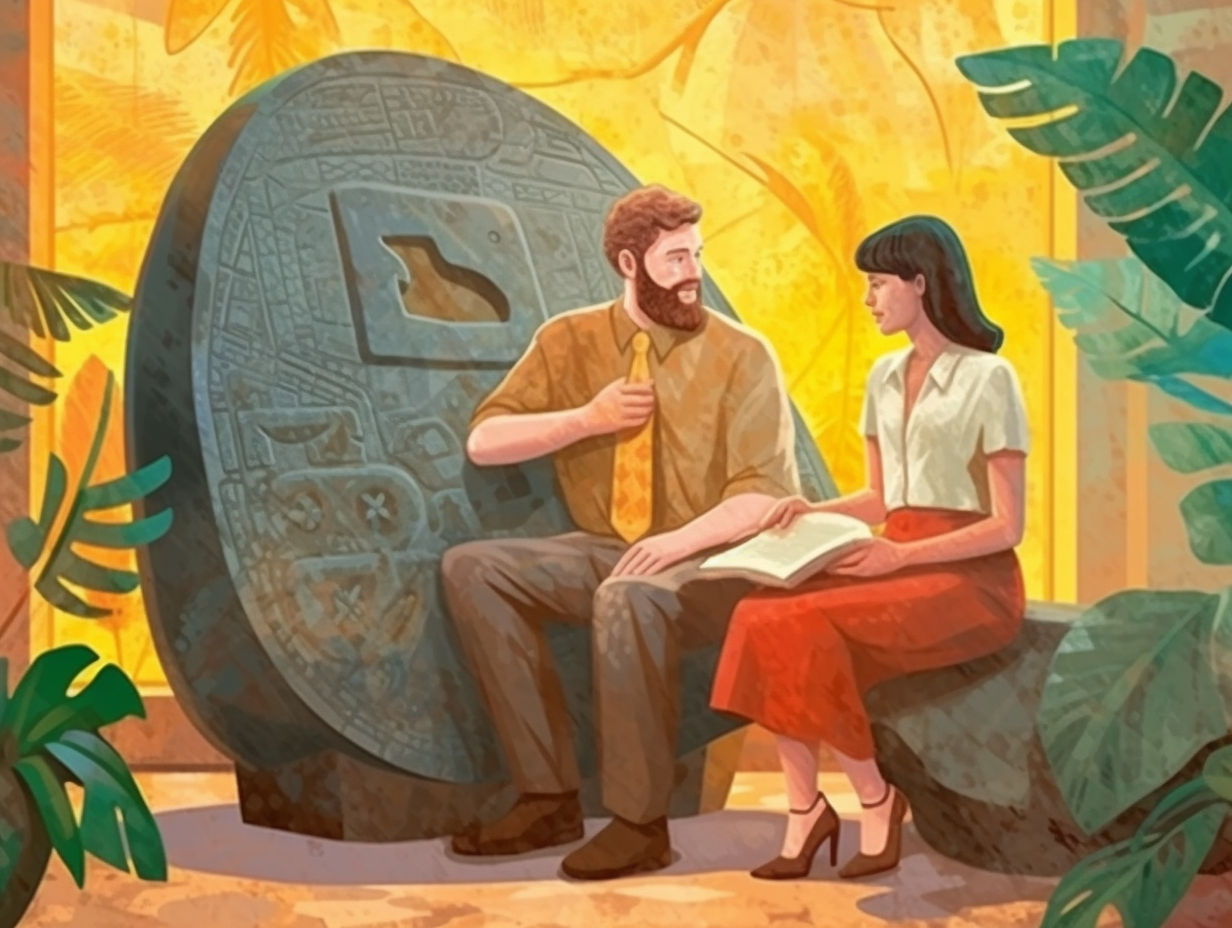Discover the Top 13 Fascinating Fun Facts About Calendars You Never Knew!

1. Chilly Romans and Winter's Savior
Before Julius Caesar gave us the famous "Beware the ides of March," it was actually a case of "Beware the non-existent cold days of winter": The original Roman calendar only had 10 months and 304 days, turning a blind eye to the 61 chilly days in between. But fear not, Numa Pompilius swept in like a hero in thermal underwear, adding January and February to make the Roman year 355 days long, and ensuring the ancient Romans had their fair share of February frost.
Source => webexhibits.org
2. Wobbly Earth and Leap Seconds
Time flies, but Earth's rotation gets a little tipsy: Leap seconds are added to Coordinated Universal Time (UTC) to keep it synchronized with our planet's ever-so-slightly wobbly rotation, ensuring atomic clocks and astronomical time stay within ±0.9 seconds of each other.
Source => nist.gov

Discover the world's first portable timekeeping device created by ancient Egyptians around 1500 BCE. This trendy throwback accessory paved the way for modern timekeeping innovations! 🌞⏳⌛
=> Fun Facts about Sundials
3. Maya Calendar: Party, Not Panic
Party like it's 2012 but don't run for the hills: the ancient Maya calendar never actually predicted the world's end but rather saw these cyclical transitions as chances for transformation and growth, embracing multiple calendars for various meanings and fruitful changes.
Source => scientificamerican.com
4. Egyptians' 365-Day Divine Bash
You might say the ancient Egyptians had a 365-day party, complete with divine birthdays and calendar chaos: Their twelve-month calendar was based on three ten-day week cycles, marking a 360-day year, and they finished it off with a five-day birthday bonanza for deities Osiris, Isis, Horus, Seth, and Nephthys! Alas, the lack of leap years led the Egyptian calendar to drift away from the seasons, realigning only every 1,460 years.
Source => historymuseum.ca

5. Caesar's Year of Confusion
If you thought 2020 was the longest year ever, buckle up, Buttercup: The year 46 BCE takes the cake as the "Year of Confusion," with Julius Caesar adding three extra intercalary months to make it a whopping 445 days long, all to recalibrate the calendar and prepare for his calendar reform while trying to play catch-up with the seasonal cycle.
Source => en.wikipedia.org
6. Planet's Tipsy Cosmic Dance
Time flies when you're orbiting the sun, but it's also a tad tipsy: A year isn't quite a perfect 365-day jaunt around our star, clocking in at approximately 365.2564 days. To prevent our calendars from stumbling out of sync with the Earth's rotations and changing seasons, we throw in an extra day every four years as a leap year pick-me-up. So, when you blow out those birthday candles, you're not only marking another trip 'round the sun, but also commemorating our planet's topsy-turvy dance through the cosmos.
Source => astronomy.stackexchange.com
7. September-Octo Twist
Hang onto your toga and brace yourself for a Roman plot twist: September and October were actually the seventh and eighth months of the original Roman calendar, with their names coming from the Latin words septem and octo, respectively. It was only much later that Julius Caesar's great-uncle thrice removed added January and February, giving us the 12-month calendar we use today.
Source => almanac.com
8. Sweden's Calendar FOMO
Once upon a time, Sweden had a serious case of calendar FOMO and tried to merge both the Julian and Gregorian calendars into one: but this mix-up in 1712 led to an unexpected extra day, not the elusive February 30th but rather a bonus February 29th in the Julian calendar that corresponded to March 11th in the Gregorian calendar.
Source => healio.com
9. French Nature-licious Timekeeping
Ever wanted to raise a toast to mist and frost? The French had it covered: During the French Revolution, they created the French Republican calendar with twelve months named after nature's finest, like Vendémiaire (vintage), Brumaire (mist), and Frimaire (frost). Each month was split into three ten-day weeks called décades, with a day of rest on the décadi. Interestingly, the calendar also featured 10-hour days and 100-minute hours, but stuck to Roman numerals for years – quite the revolutionary mix-up!
Source => en.wikipedia.org

10. Playground of Zodiac Constellations
If the zodiac constellations were a bunch of kids in a playground, you'd have speedy little Virgo zooming past in five days while chatty old Pisces takes his sweet 38-day stroll: The Sun passes through different zodiac constellations at varying speeds, with some taking as little as five days and others taking up to 38 days, which is why astrological signs don't perfectly match up with their original celestial inspirations.
Source => astronomy.com
11. Lunar FOMO and Leap Months
When the lunar calendar gets a serious case of FOMO and decides to crash the solar party, leap months to the rescue: Lunisolar calendars, like the Chinese and Hebrew, add an intercalary or leap month every 2-3 years to sync up with both the moon and the sun, keeping their accuracy in check for agricultural and religious events.
Source => en.wikipedia.org
12. Ethiopian Timekeeping Loop
Who needs a time machine when you've got the Ethiopian calendar, packed with a grand leap year encore every four years, no ifs or buts! In this chronos-verse, the Evangelists take turns ushering in each year: John kicks things off, followed by Matthew, Mark, and then Luke hits the sixth gear with an extra epagomenal day, rounding up the loop. No need for sci-fi contraptions, just wise timekeeping by lovely Ethiopia! So, buckle up: This calendar has leap years every four years without exception, and each year is attributed to one of the four Evangelists—John, Matthew, Mark, and Luke—in that order, culminating with a sixth epagomenal day during Luke's year.
Source => en.wikipedia.org
13. Pope's Calendar Traffic Control
Picture Pope Gregory XIII as a celestial traffic cop, red cape billowing and whistle in hand as he pulls over the Earth, exclaiming, "Hey, you're losing minutes! Time for a calendar tune-up!": The Gregorian calendar was introduced in 1582 to rectify a 10-day discrepancy caused by the Julian calendar miscalculating the length of the solar year by 11 minutes, resulting in a drift of 1 day every 128 years. By tweaking leap year spacing and leap day omission, our Gregorian guru's calendar adjustment brought the Earth's annual journey around the sun more in sync, at 365.2425 days compared to the actual 365.2422 days.
Source => en.wikipedia.org









